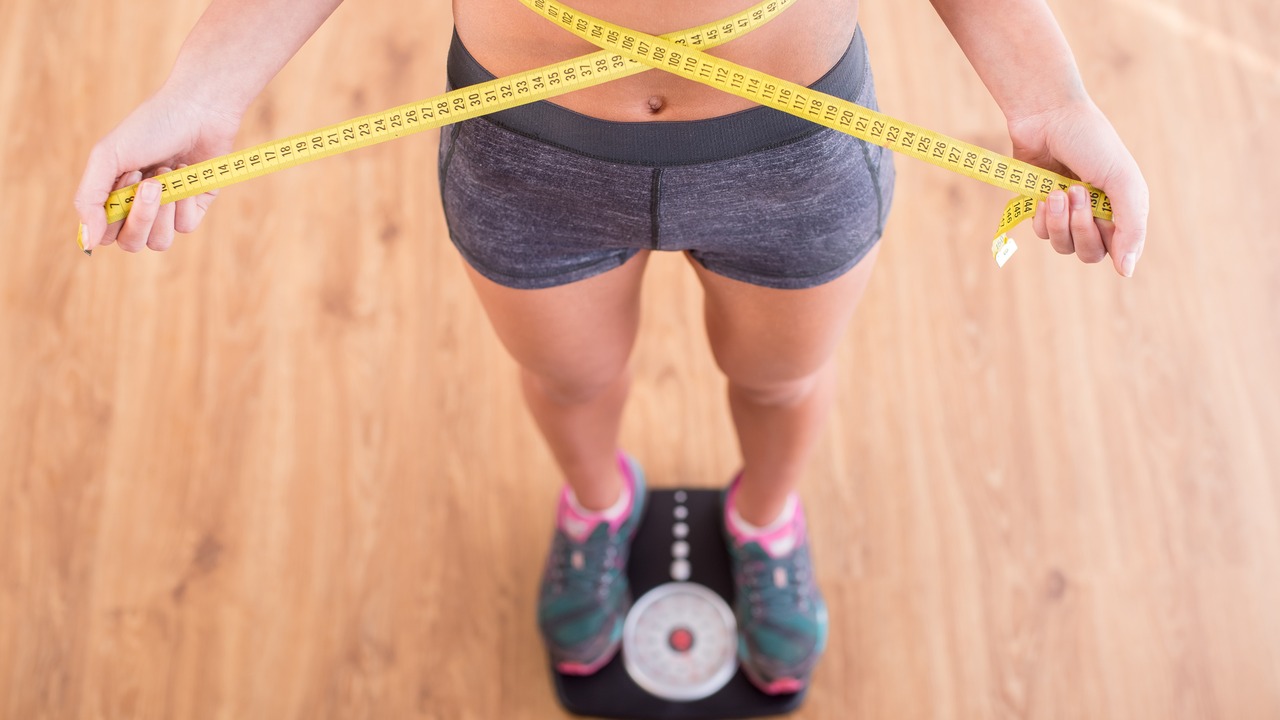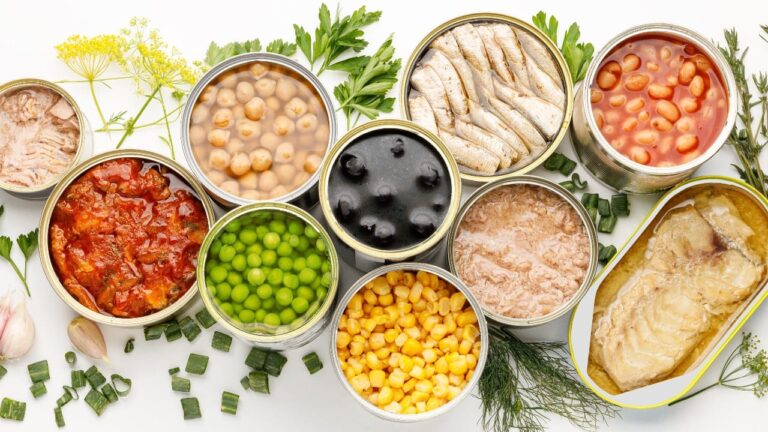24 Best Ways to Naturally Lose Weight, According to Dieticians

Weigh-reduction drug Ozempic is the toast of our camera-happy celebrities. Khloe Kardashian said she would probably have tried Ozempic had she not already changed her lifestyle for the better.
Once we reach mature adult age in our early twenties, we have a decade or two of optimum physical output — it’s all downhill from there. Staying active isn’t always achievable; work, family, and life’s challenges are always ready to halt any exercise plans.
We’ve put together and researched the easiest methods for losing weight naturally. The work starts in the kitchen, though it radiates to other areas of everyday life.
1. Get the Metabolism Working

While we can’t ignore the diet and body weight relationship, high-intensity interval training (HIIT) makes a great back up. Increasing metabolic activity through cardio-heavy work means we burn calories more naturally, even when we are resting.
The “high-intensity” label has levels — it doesn’t mean training like an MMA fighter for everyone. A simple, daily workout can become part of any routine.
A fast metabolism is like a backup generator: it keeps the fat burning even when things go wrong — good for days when the discipline falters. Harvard Health’s “The Nutrition Source” explains how easy it is to incorporate a short, intense workout into one’s day.
2. Reduce Your Plate Size

AARP believes the first step to achieving a lower waist size is by keeping things simple and reducing plate size. Of course, avoiding the buffet is probably another lesson here.
Human beings have a penchant for avoiding waste; therefore, we eat everything on our plates. Instead of thinking quantity, go for quality and less of it.
3. Portion Control

Once you have replaced all your 12-inch plates with 9-inch versions, you are halfway there. The other battle is fighting the urge to eat seconds. A smaller plate can only do so much — willpower is vital.
I was blown away on my first visit to Midwest America by how big portion sizes were; moreover, I couldn’t believe how much food was left over. The British Heart Foundation believes measuring out your portions with cups or spoons can help.
4. Soluble Fiber Is Your Friend

The best way we can prevent fat and sugar from absorbing into our system is high-density soluble fiber foods. This miracle food group can lower serum cholesterol levels, according to ScienceDirect.
Many different food products contain soluble fiber, including legumes, flaxseed, and figs. Anything that releases slow energy is better than energy-dumping carbs.
5. Walk After Dinner

While Anglo societies tend to prefer walking for recreation, in many parts of the world, it is by design. I live in Spain, where everybody walks a lot because parking is so difficult. A ten-minute walk ends up quicker than a one-minute drive, for this reason.
We often justify driving to save time, but using the stairs instead of the elevator will cost a few minutes a day, could add years to your life, and shed inches from your waste. HCA Florida Healthcare says walking after eating increases the rate of weight loss, among other fringe benefits.
6. Drink Water Before Meals

We don’t need to go over the healing, life-extending perks of water. Our bodies are made primarily of this magic liquid, meaning water helps maintain bodily function. Many experts recommend only drinking water with meals and, better still, drinking a good dose before meal times.
A glass of water before dinner will make us feel fuller, lowering the risk of overeating; moreover, WebMD cites a related study that showed people ate 22% less food using this technique.
7. Toss the Refined Carbs

Refined carbs are defined as ultra-processed carbohydrates, which offer no nutrition to the consumer — only a dopamine hit. Once these redundant carbs go in, our initial power surge subsides into more snack cravings.
Let’s be honest: we’ve all been there. Avoiding foods such as candy, white bread, and chips is far from easy. MedicalNewsToday lists several side effects of this lifestyle choice: stroke risk, chronic back pain, and hypertension.
8. Go Carnivore

Joe Rogan is perhaps America’s most famous carnivore dieter; he got rid of carbs, replacing them with healthier animal fats. However, it is a difficult step for most food lovers who enjoy fruits, vegetables, and grains.
However, for anyone wanting to shed pounds, a carnivore diet is highly effective. The Institute for Optimum Nutrition (ION) says eliminating carbs leads to more ketosis. It means that once you have burned off calories, your body then burns fat instead of feeding off carbs when
9. Intermittent Fasting

Intermittent fasting is when we limit the hours in which we can consume food. Some people eat between 8 a.m. and 8 p.m.; others are even more extreme with their fasting.
Much like a plant using reserve carbohydrates to produce sugar at night, our body has an inverse process where it burns fat reserves. Fasting expert and John Hopkins neuroscience writer Mark Mattson calls this process “metabolic switching.”
10. Don’t Skip Meals

Connected to fasting is skipping meals, which shouldn’t be confused with fasting. While skipping the same meal every day over a period matches the definition, there is a difference.
There may be a tendency to believe meal-skipping will trim the waistline, but the inverse is more likely. Piedmont Healthcare explains that if we deny our body sustenance at the wrong time, our blood sugar drops, leading to — you guessed it — more snacking.
11. Low Sugar, Not No Sugar

We have all heard the podcast, seen the TikTok, and got the tee shirt on how bad sugar is for us. Many people’s first perception of a sugar-free diet may be positive.
However, a 2024 G.Q. article begs to differ. “Experts increasingly say that it’s important to distinguish between a zero-sugar diet, a zero-added-sugar diet, or a low-sugar diet,” writes Ashwin Rodrigues.
We should avoid “added sugar” whenever possible, but natural sugars are a vital component of a balanced diet, says a University of California San Diego (UCSD) review.
12. Eat Slowly and Chew Properly

My loved ones frequently complain that I am a slow eater, but to them, I say, “Don’t hate the player; hate the game.” The reason for my confidence? A Time Magazine review that cites a Japanese study on the subject.
In short, the preliminary research the article cites says chewing thoroughly may help us burn up to 10 calories more per meal. While this may appear unimpressive, on a monthly or yearly tally, it could really add up.
13. Eat More Fruits and Vegetables

Children dodging their greens is an age-old trope, though one that won’t go away anytime soon. We must do our utmost to promote this lifestyle, if anything, to give children the essential minerals needed for healthy development and take the place of unhealthy snacking habits.
The best way to ensure such a habit for kids is as a first-choice snack. The chances are it will fill them up and negate the need for that promised cookie reward. The CDC recommends buying as much fresh produce as possible because the “water and fiber” contained helps fill us with good calories.
14. Cook From Scratch

There are few excuses for not cooking at home unless you happen to be the U.S. President, a world-touring singer, or an unhoused person with no kitchen. Learning the basics is simple for most, and there is more chance it leads to fewer calories.
The American Journal of Preventative Medicine (AJPM) found that eating at home was connected to lower calorie consumption and overall living costs. Lose weight, save money, and gain confidence — this sounds like a three-peat win.
15. Go Whole or Go Home

When grains are harvested, grains such as rice, wheat, and barley have outer layers known as kernels. These grain layers consist of endosperm, germ, and bran, which are removed for processed versions.
Milled grains come without the fibrous coating, which contains vital fatty acids and healthy vitamins. Furthermore, an Elsevier Journal of Nutrition entry for the National Library of Medicine argues that there is a link between whole grains and lower abdominal fat deposits.
16. Meal Prepping

Professional bodybuilders, nutrition nuts, and gym enthusiasts swear by meal prepping, which can save time in a busy schedule. It is no surprise that chances of a slimmer waistline increase when more care goes into each ingredient used.
Kimberly Holland writes for EatingWell how meal prepping allows you to “control the ingredients and can make sure your calories are coming from mostly nutrient-dense whole foods.”
17. Batch Cooking

For those already familiar with meal prepping, meet batch cooking — the meal prepper’s best friend. Batch cooking might involve doing all the week’s cooking in one day or over fewer cooking sessions.
There are obvious financial and time-saving advantages to cooking everything all at once, though the health benefits are clear. By cooking everything ahead of time, you lessen the chance of cooking a quick, unhealthy meal or ordering out, says CleanEatzKitchen.
18. Move to Finland or Drink More Coffee

Finland is the world’s largest per capita coffee consumer in the world, and the Nordic nation ranks third in body mass index (BMI) across the E.U. Clearly, this isn’t conclusive evidence for weight loss. Still, there may be a connection between low BMI and coffee consumption in Finland!
A 2023 American Journal of Clinical Nutrition research article found that a one-cup increase in daily coffee was linked to weight loss — decaffeinated coffee also. Of course, the coffee must be unsweetened, though even with sugar, weight reduction is still possible.
19. Write a Food Diary

A disciplined financial operator keeps stock of their outgoings; someone looking to lower their weight can do the reverse. While it may be tedious after a meal, reflecting on every item you consume will help you focus on the bigger picture.
A Journal of Diabetic Research study of 1,685 people found that dietary tracking was a success. The study cites dietary tracking as an “important component of successful weight loss.” Participants who recorded at least five days of food intake per week showed “significant and sustained weight loss over time.”
20. Curb Your Unhealthy Cooking

It may sound obvious, but adapting one’s cooking repertoire means we can offset many calories per meal. Instead of frying that fish filet, why not steam it?
MD Anderson Cancer Center lists deep frying as one of the most unhealthy things we can do to our bodies. The report says frying and grilling at high temperatures creates “chemicals called heterocyclic amines (HCAs) and polycyclic aromatic hydrocarbons (PAHs).”
21. Spice Things Up

A 2012 study review from the American Chemical Society found a link between black pepper consumption and weight loss. The formation of fat cells is known as “adipogenesis,” which black pepper may prevent or reduce.
Who would have known that adding spices to your diet can help burn calories? Medical Weight Loss Clinic reveals which seasonings help the waistline. Another great spice is cinnamon, known for quashing hunger pangs.
22. Cut out the Booze

Oscar Wilde once said, “Work is the curse of the drinking class.” His obvious play on words is still prevalent in some societies, including parts of the United States. It isn’t easy to avoid alcohol, especially during festivities, though doing so is guaranteed to help you lose weight.
The National Health Service (NHS) says alcohol is the equivalent of seven calories per quarter-ounce. Mitigating steps to lose weight when drinking include drinking water after each alcoholic beverage and not drinking in rounds.
23. Avoid Stress

There is research to show that stress produces weight gain as a byproduct, though it depends on the person. While for some, there is a direct correlation between hypertension and weight loss, for others, it isn’t the case.
Cortisol is a natural hormone our body releases when in “fight-or-flight” mode, and long-term elevated cortisol levels have a detrimental effect on metabolism. Higher cortisol exposure over the long term can result in more junk food cravings.
24. Get Some Sleep

The expression “Getting one’s beauty sleep” may be more realistic than we think. Daniel Pacheco of Sleep Foundation writes that we burn roughly “50 calories an hour.” He refers to our “basal metabolic” rate, responsible for basic bodily functions, which rely on 80% of most people’s daily calories.
Of course, metabolic rate is key, but there is an obvious connection between sleep and weight loss. If you are in bed, you cannot access the fridge — fact.





